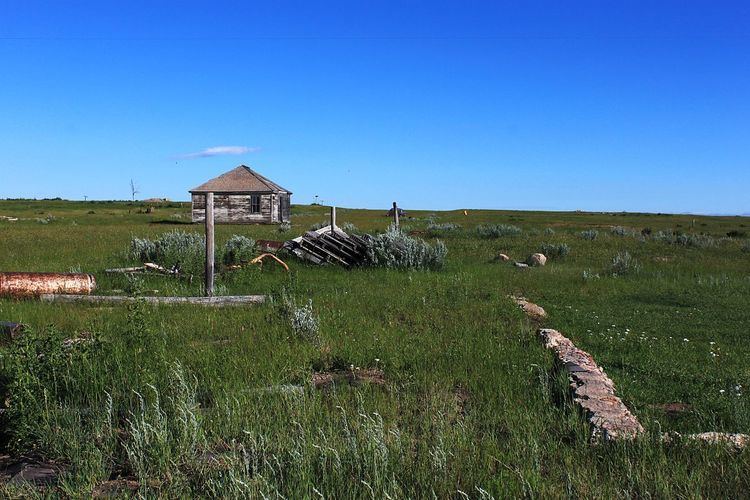Country Canada Census division 4 Established 1910 Province Saskatchewan Population 200 (1920) | Region Southwest Saskatchewan Rural Municipality Reno Incorporated (Village) 1917 Local time Sunday 9:54 PM Area code 306 | |
 | ||
Weather 1°C, Wind N at 8 km/h, 92% Humidity | ||
Vidora is an unincorporated community in Reno Rural Municipality No. 51, Saskatchewan, Canada. The community once had a population of 200 people. It previously held the status of a village until January 1, 1952. The community is located between Robsart and Consul on highway 21 & highway 13 known as the Red Coat Trail. Very little remains of the former village, only one home that is also used as a post office still stands as of 2008. There are many cement foundations and sidewalks still found scattered around the town site, including the remnants of the old bank vault to the former Municipality Office.
Contents
Map of Vidora, SK, Canada
History
In 1910 construction of the Canadian Pacific Railway line came through Vidora. Many of the CPR's engineers and surveyors were housed at a local farm house during construction of the rail line. Living at the same house where two girls named "Vi" and "Dora", the engineers and surveyors decided to use the two names to name the land because of their great hospitality, thus giving the town its name "Vidora". After the land was named, settlers as well as bootleggers began to settle the area starting the community of Vidora. By 1917, the community was incorporated as a village, and now had its very own town Council, and mayor. After becoming a village, Vidora began to grow quite fast and prosperous. By 1920, the village business districts consist of more than twenty businesses, including businesses such as a post office, cafe, pool hall, main hall, banks, lumber yards, general stores, a hotel and a spectacular row of 5 grain elevators. Vidora even had its very own electrical power plant, powering the whole town.
Prior to January 1, 1952, Vidora was incorporated as a village, and was restructured as an unincorporated community under the jurisdiction of the Rural municipality of Reno on that date.
Prohibition
Like most towns throughout Alberta and Saskatchewan, Vidora began as a small parcel of land owned by the Canadian Pacific Railway. Like many towns of southwest Alberta and Saskatchewan such as Govenlock, Senate and Whiskey Gap, Alberta Vidora had a fair amount of bootleggers, that came into the area to smuggle rum, alcohol, and whisky across the border during Prohibition in the United States.
The Great Depression
Vidora’s future looked promising but due to the Great Depression years, with accompanying droughts, falling grain prices and poor crop yields, Vidora's population slowly began to decline. Beginning in 1924 a devastating fire destroyed many important businesses including Vidora’s first store, post office, cafe, pool hall and main hall. Then in 1926 and 1928 more vital businesses would also be wiped out by fire. In 1936 the C.P.R. station closed and afterwards moved to Frontier. In 1961 the Vidora General Store was moved to Robsart, then in 1969 the rural municipal office was also moved to Consul as did the Vidora Community Hall in 1976. To mark the end of its long prosperous life, Vidora's five grain elevators closed and were torn down sometime in the 1970s or 1980s.
